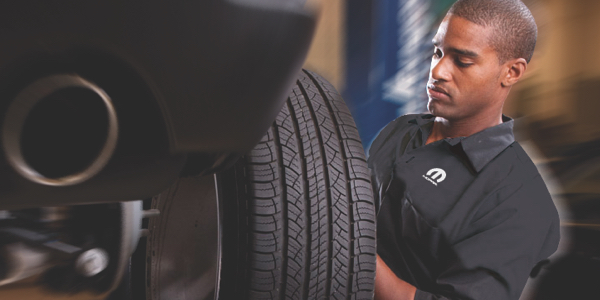Experience Precision with GMC Tire Service at Morris Tires
Experience Precision with GMC Tire Service at Morris Tires
Blog Article
Tire Solution: The Effect of Weather Condition Conditions
When it comes to guaranteeing ideal efficiency and safety on the roadway, recognizing the impact of weather condition problems on tire solution is critical. GMC Tire Service. In this discussion, we will explore the complex relationship in between weather condition problems and tire service, losing light on the value of weather-specific tire upkeep methods and considerations.
Warm and Tire Performance
When exposed to high temperatures, tires experience modifications in performance that can dramatically affect car security and handling. The warmth generated from extended driving or heat problems causes the tire rubber to soften, leading to lowered walk life and increased wear. As the rubber ends up being softer, the tire's hold when traveling lessens, influencing braking distances and total traction. In severe situations, excessive warmth can also trigger tire blowouts, presenting an extreme safety threat to the vehicle and its residents.

Cold Climate Results
Cold weather conditions can have a considerable impact on tire performance and safety. In cold climate, tires may likewise lose air pressure a lot more swiftly, which can affect handling and gas performance.
To alleviate the effects of cool weather on tires, it is crucial to on a regular basis examine tire pressure and inflate them to the maker's recommended levels. Utilizing wintertime or all-season tires created for winter conditions can additionally enhance grip and grip on icy or snowy roads. Proper tire upkeep, including routine inspections for wear and damage, becomes a lot more crucial throughout cooler months to make certain ideal efficiency and safety and security.
Rainy Issues Effect
During stormy problems, tire performance and safety can be substantially influenced by the damp road surfaces and decreased visibility. The tread pattern of tires plays an essential function in keeping traction on wet roads. Tires with worn-out footsteps are more vulnerable to hydroplaning, where a layer of water accumulates between the tire and the road surface, leading to loss of traction. To fight this, vehicle drivers need to on a regular basis evaluate their tires for adequate walk depth and take into consideration buying tires especially developed for damp problems.
Moreover, rainy climate can additionally decrease visibility, making it challenging for vehicle drivers to see the roadway in advance clearly (GMC Tire Service). In such conditions, it is necessary to change driving rates accordingly and keep a safe adhering to range to permit sudden stops. Appropriately inflated tires can likewise assist in maintaining control on damp roadways by offering far better handling and hold
Snow and Tire Safety
When driving in snowy conditions, having the right tires can make a significant distinction in safety and security and efficiency. Winter tires are developed with unique rubber compounds and step patterns to provide far better grip on snow and ice contrasted to all-season tires.

In addition, vehicle drivers need to consider setting up tire chains in severe snowy problems. Tire chains provide additional traction by gripping the snow and ice, enhancing stability and control. However, it is essential to comply with producer instructions when installing and making use of tire chains to stop damages to the tires and car. By selecting the appropriate tires, keeping correct rising cost of living, and thinking about added grip help like tire chains, vehicle drivers can boost their safety when browsing find out here now snow-covered roadways.
Weather-Related Tire Upkeep
Weather-related tire upkeep incorporates a range of methods intended at making sure optimal tire feature and long life in different weather condition situations. One essential facet of weather-related tire upkeep is tire pressure law. Checking tire tread frequently and replacing tires when tread wear reaches a certain deepness is important for maintaining grip and security in adverse weather condition.
Conclusion
In verdict, weather condition conditions have a considerable influence on tire efficiency and safety and security. From warm impacting tire stress and wear to chilly climate minimizing grip, it is crucial to take into check this site out consideration the weather condition when keeping and making use of tires. Wet conditions can lower hold and lead to hydroplaning, while snow can raise the threat of crashes if tires are not appropriately furnished. Weather-related tire upkeep is important in guaranteeing ideal performance and security when driving.
In this conversation, we will explore the detailed connection in between weather condition conditions and tire solution, shedding light on the relevance of weather-specific tire upkeep practices and considerations.

Report this page